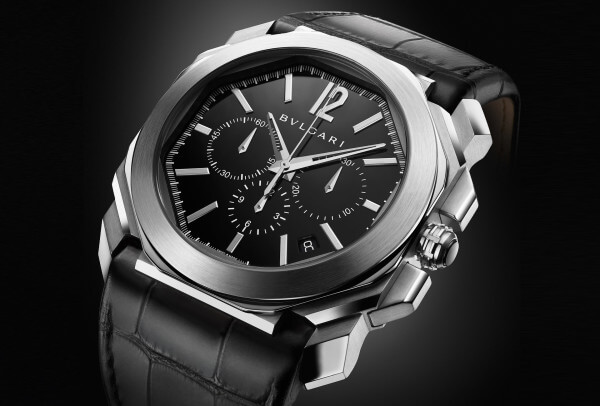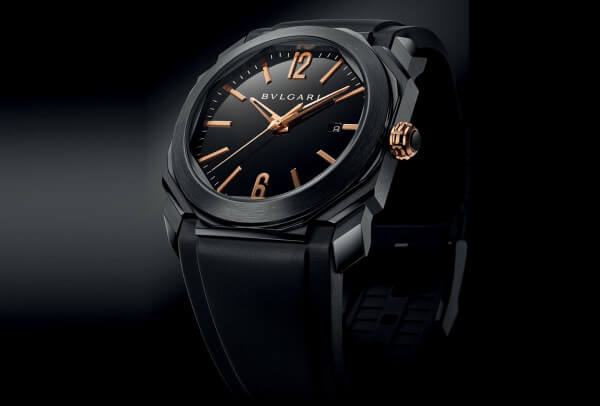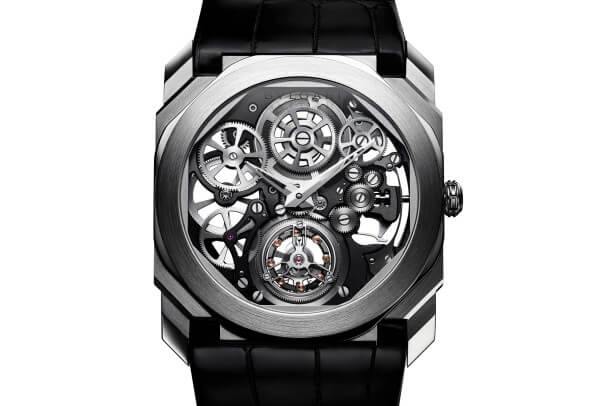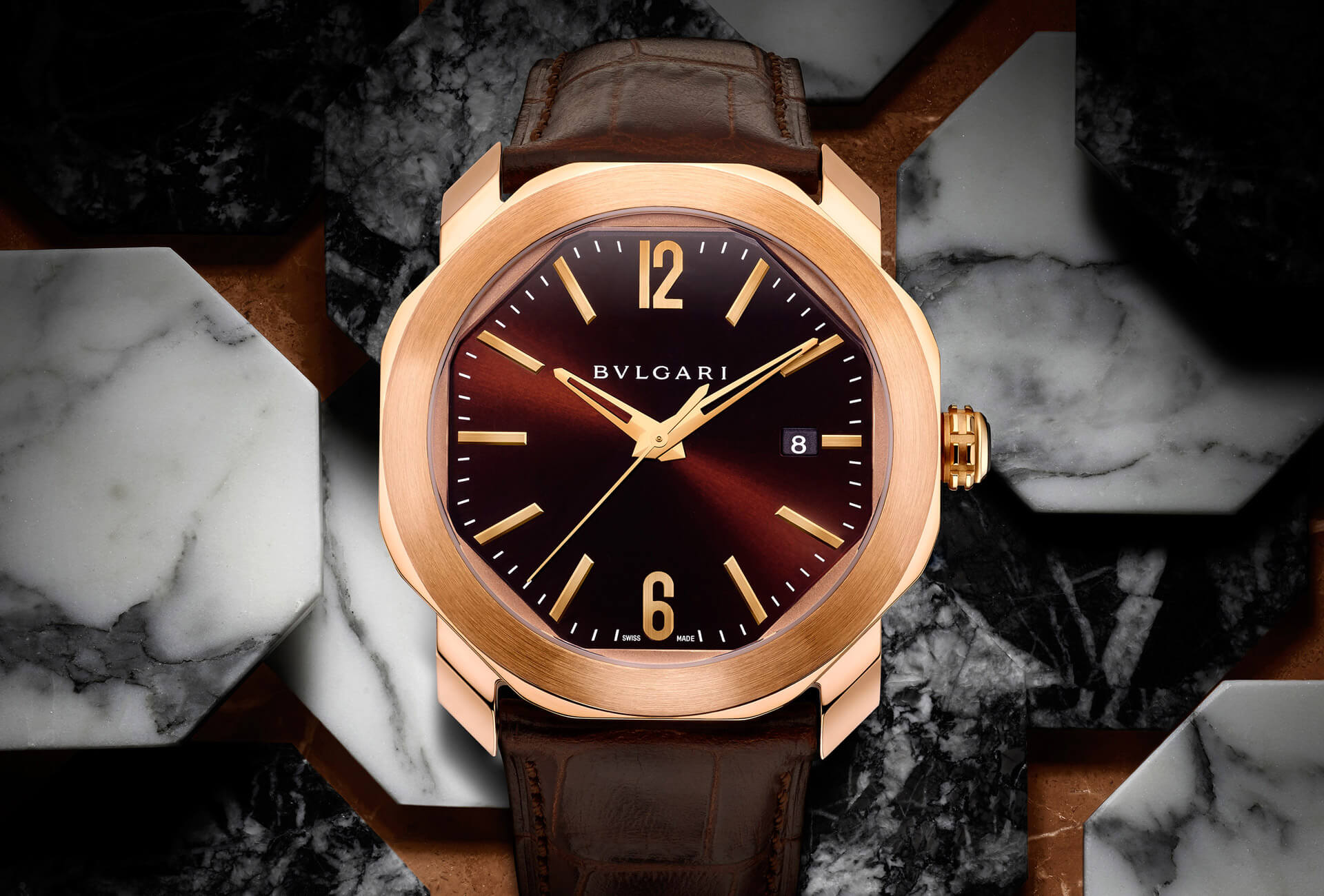Founded in Rome in 1884, Bulgari has more than one icon up its sleeve. The distinctive jewellery creations, the powerful Serpenti collection and the famous Bvlgari Bvlgari watches are all recognisable at a glance. And they have all been inspired by the treasures of Rome, from its architecture and history to modern-day chic. Launched in 2012, the Bulgari Octo – the latest addition to the Bulgari watch family – is already well on its way to becoming the luxury brand’s next icon. Showered with worldwide attention from the start, the watch has developed into a collection that has gained international recognition for both its design and technical achievements, rewarded with two very impressive world records in just five short years. But, as is often the case, the “rapid rise to fame” is the result of long-term planning that has been many years in the making.
“At Bulgari we love to play with pure geometry and pure shapes,” says Fabrizio Buonamassa Stigliani, Director of Bulgari Watches Design Centre in Neuchâtel He joined the Bulgari horology division in Rome in 2001, and “from the beginning” presented proposals for a new watch based on a distinctive octagonal shape with a round bezel. Design sketches in 2004 laid the foundations for the new Bulgari Octo that we see today. “The objective was to bring some elements of Rome, its history and architecture, but also its modern design, to the timepiece. The Octo was inspired by the arches of the Maxentius Basilica in the Roman Forum, considered to be a marvel of Roman engineering for that time.”
The watchmaking of Bulgari is italian design codes with Swiss watchmaking skills.
While designers were busy working in Rome, Bulgari was implementing a long-term strategy of vertical integration with the acquisition of top-level manufacturing facilities in Switzerland. It already owned Le Sentier Manufacture GG&DR, purchased from The Hour Glass Singapore shortly after Bulgari’s takeover of the Gérald Genta and Daniel Roth brands in 2000. The Design Centre moved from Rome to Neuchâtel, Switzerland, during the period 2009-11 for easier coordination of the different sites, today composed of Le Sentier for mechanical movements (from automatic base calibres to the highest complications including chiming watches and tourbillons), La Chaux-de-Fonds for high-end dials, Saignelégier for cases and bracelets, and the Neuchâtel headquarters that house the assembly workshops along with design, after-sales, management and marketing. “Italian design codes with Swiss watchmaking skills,” summarises Buonamassa Stigliani, who returns to Rome regularly for inspiration.

Two world records
Presented with an eight-sided case, a round bezel, and an octagonal flange on the dial, the Octo structure is far more complex than it first appears. The case is sculpted with an incredible 110 facets, polished and satin-finished to the most stunning effect. Smoother than it sounds, the Octo is classic and easy-to-wear. In a 41.5 x 10.55 mm pink gold or steel case with a rich black lacquer dial and a black alligator strap, the Octo was launched to become a pillar for the Bulgari men’s collection. Adding to the unique design appeal of the timepiece is the in-house movement: the self-winding Bulgari Calibre BVL 193 with classic three-hands and date functions, and a power reserve of 50 hours with two barrels.
2014 was a landmark year for Bulgari and the Octo. Just two years after having introduced and positioned the watch, Bulgari took everyone by surprise with the introduction of the extra-thin Octo Finissimo. A result of the vertical integration of the brand, the manual-winding Finissimo was also developed and manufactured entirely in-house. It shows an hour and minute display, with a small seconds hand at 7:30 on the dial and the power reserve – an impressive 65 hours – indicated on the back. All this for a calibre that is only 2.23 mm thick! Bulgari was intent on “going where others don’t go”. In an even more astounding move, that same year it set a world record for the thinnest tourbillon movement ever made, just 1.95 mm thick. Record assoluto! The entire Octo Finissimo Tourbillon watch measures 40.5 mm in diameter and an amazing 5 mm thick. In this landmark year, Bulgari also introduced its in-house chronograph movement, the Velocissimo Calibre BVL 328 (based on the El Primero from Zenith).

2016 saw the introduction of the Ultranero line, including a Finissimo Skeleton version presented with a 40 mm “very black” steel case with D.L.C. (Diamond Like Carbon) coating that contrasts with a pink gold bezel and dial elements for a gorgeous result. Also in 2016, Bulgari set a second world record with the highly complicated Octo Finissimo Minute Repeater and its movement, just 3.12 mm thick. With a total case thickness of 6.85 mm, it is (still) the thinnest minute repeater in the world. It took five years to develop, and required a special titanium case and dial to optimise sound volume.

Introduction of the Octo Roma
This year, the Octo Finissimo Tourbillon is proposed in a stunning Skeleton version, providing a fascinating view of the still thinnest tourbillon movement in the world (BVL 268 Finissimo), which has a power reserve of 62 hours. The entire case, just 5 mm thick, is made of platinum. In a very natural and logical extension, the Octo collection will see the launch of the Octo Roma, offering something a little less edgy for those who seek a “smoother” shape and case. With the characteristic Octo shape and bezel, this case has 58 facets instead of the original 110, resulting in a slightly rounder, somewhat more dressy appearance “You still recognise the Octo design,” says Buonamassa Stigliani about the Octo Roma, “but when you see them together (with the “110”) you also see how different they are. Apart from the number of facets, the bracelet, the thickness, the width of the bracelet, the general design are different, the lugs are different, the attach for the leather strap is different, but you know they are both Octos.”
The Design Director knows that price is an important factor for the market today. Octo is the best-seller for men (ladies too appreciate the extra-thin models), with a wide range of products and prices. “We need to have iconic pieces to tell the story of the brand, with a very unique Italian design and Swiss manufacturing, and which at the same time make sense with the needs of the client and the market. Octo prices start at €5,800, with minute repeaters priced at €160,000; that’s between €40,000 and €50,000 less than our competitors.” Marketers say that iconic products are built with instantly recognisable designs, an interesting story, excellent quality, and the ability to personally relate to a customer. With these requirements, it would seem that the Bulgari Octo is well on its way to reaching icon status.



















